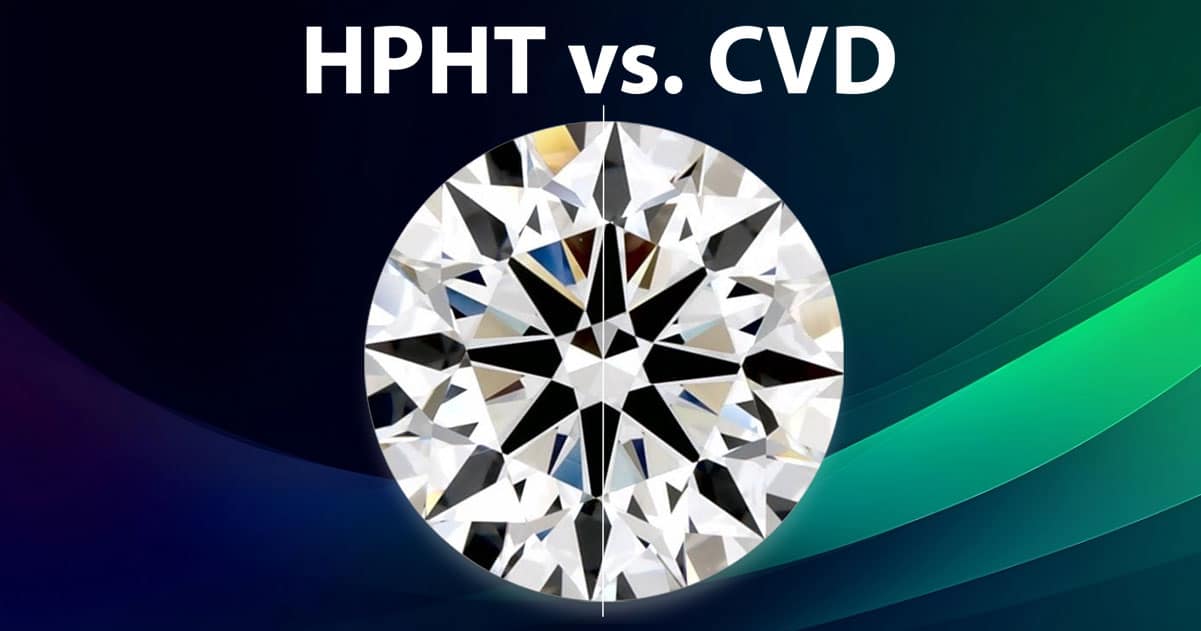When it comes to lab-grown diamonds, two primary methods dominate the market: High Pressure High Temperature (HPHT VS CVD) and Chemical Vapor Deposition (CVD). Both methods produce high-quality diamonds that are chemically identical to natural diamonds, but they differ significantly in their processes, characteristics, and applications. Understanding these differences can help you make informed decisions when considering lab-grown diamonds.
The HPHT Diamond Creation Process
High Pressure High Temperature (HPHT) diamonds are created by simulating the natural conditions under which diamonds form in the Earth’s mantle. This method involves placing carbon in a chamber and applying extreme heat (around 1,500 degrees Celsius) and pressure (about 1.5 million psi). The result is a diamond that forms in a matter of weeks, closely resembling natural diamonds. HPHT diamonds are often characterized by their unique inclusions and can sometimes exhibit a more classic diamond appearance.
The CVD Diamond Creation Process
In contrast, the Chemical Vapor Deposition (CVD) method involves a different approach. CVD diamonds are created by introducing a carbon-rich gas into a chamber and using a process that breaks down the gas into carbon atoms. These atoms then deposit onto a substrate, gradually crystallizing into diamond form. The CVD process allows for precise control over the diamond’s growth environment, resulting in diamonds that are typically more uniform in appearance and clarity. This method can also be utilized to create colored diamonds more easily.
Key Differences in Quality and Appearance
While both HPHT and CVD diamonds are of high quality, they can exhibit different characteristics. HPHT diamonds often have distinctive inclusions that reflect their formation process, while CVD diamonds tend to be more consistent in color and clarity. Consumers may find that CVD diamonds have a more modern, clean look, making them appealing for contemporary jewelry designs. On the other hand, some people appreciate the unique inclusions of HPHT diamonds, which can add character to the stone.
Cost Considerations: HPHT vs. CVD
When comparing HPHT and CVD diamonds, pricing can vary based on several factors, including the size, quality, and market demand. Generally, CVD diamonds tend to be more affordable due to the lower production costs and the scalability of the process. However, HPHT diamonds may be priced higher for specific qualities or historical significance, especially if they are recognized as unique or rare stones. Ultimately, your choice may also depend on your budget and personal preferences.
Applications of HPHT and CVD Diamonds
Both HPHT and CVD diamonds are used in various applications beyond jewelry. HPHT diamonds are often employed in industrial applications, such as cutting, grinding, and drilling, due to their hardness and durability. CVD diamonds, on the other hand, are increasingly utilized in technology and electronics for their exceptional thermal conductivity and optical properties. As the technology behind lab-grown diamonds advances, the applications for both HPHT and CVD diamonds continue to expand.
Environmental Impact and Ethical Considerations
One of the primary reasons consumers choose lab diamonds is their reduced environmental impact compared to mined diamonds. Both HPHT and CVD processes are more sustainable than traditional mining methods, as they require less land and water. Furthermore, ethical considerations play a crucial role; lab-grown diamonds are conflict-free, providing peace of mind to consumers concerned about the social implications of their purchases. Ultimately, choosing between HPHT and CVD may also reflect your values regarding sustainability and ethical sourcing.
Conclusion: Choosing Between HPHT and CVD Diamonds
In summary, both HPHT and CVD diamonds offer unique advantages and characteristics. The choice between the two ultimately depends on your preferences regarding appearance, cost, and applications. Whether you opt for the classic charm of HPHT diamonds or the modern consistency of CVD diamonds, you can feel confident that you’re selecting a high-quality, ethically produced gem. Understanding the differences between HPHT and CVD diamonds empowers you to make an informed decision that aligns with your values and style.

